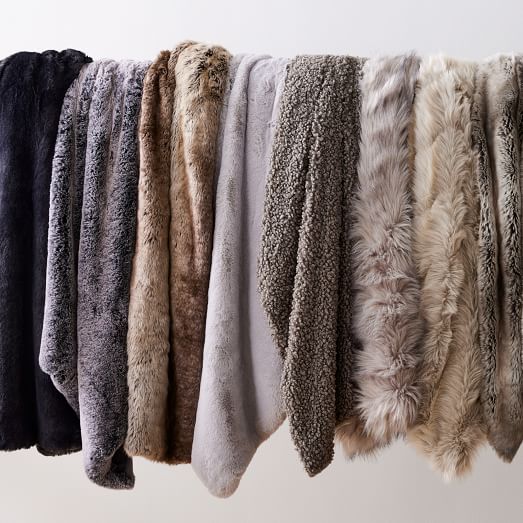Would you rather wear an exploited animal or plastic that released incredibly toxic chemicals? It’s a debate that challenges morality and environmental care. Those in favor of real fur rely on the argument that the process of creating faux fur is incredibly damaging to the environment, while those against argue that real fur promotes animal brutality. Without a doubt, faux fur is the better option as it leads to the least amount of harm to the environment and its species. Acknowledging what type of fur is better for the environment and most moral will help us evolve and create policies and ways to help preserve our environment in a moral way.
Weighing our options.
Real fur supporters argue that the creation of faux fur leads to the production of harmful chemicals, harming the environment. Most, present-day, faux is made from synthetic fibres… including polyester (Bustle). Furthermore, the process of the creation of polyester uses an abundant amount of petroleum. Polyester alone “uses almost 70 million barrels of oil a year” (Green Living Detective). But what exactly does this mean for the environment? The creation of faux fur is harmful to the environment because all the emitted toxins contribute to the amount of greenhouse gases and pollution affecting our planet. This contributes to global warming, affecting the cycles of earth’s atmosphere. Furthermore, people also argue that Faux fur is non biodegradable, and therefore, detrimental to our environment. Essentially, this means that the plastic used to create this fur is unable to break down and be recycled or reused through the process of decomposition. Due to this, faux fur will ultimately end up in landfills (unlike real fur which will decompose and be used again through soils). Although faux fur seems to be the worst option because it harms the environment, real fur also harms the environment and promotes animal brutality.

Real fur’s foundation is built upon animal exploitation. Morality is a concern when it comes to the usage of fur. On PETA’s website, there’s an opening statement describing that, “animals endure a life of misery, pain, frustration, and fear and many are skinned alive.” Killing an animal in such a way is both disturbing and immoral. Wanting real animal fur as a coat does not justify the pain that animals are forced to endure. In addition, the production of real fur also has negative impacts on the environment. “Emissions of nitrous oxide and ammonia from mink manure are a serious issue” (Faunalytics). Nitrous oxide is a greenhouse gas that is “300 times more harmful than carbon dioxide” (CBCNews). The farms and overbreeding of animals release many toxic chemicals into the air, creating a negative environment, just like plastic fur. Real fur is worse, as it has multiple ways to harm our environments.
Rabbit fur explored during FYS class on October 30, 2021.
Morality and the environment are both at stake. I have decided that real fur is not the option I will be choosing because, not only are animals brutally murdered, but the process also involves toxins going into the atmosphere.
Bibliography
Cutler, Lauren. The Boar, 18 Oct. 2020, https://theboar.org/2020/10/fur-fashion-morally-wrong-sustainable-alternative/.
“Faux Fur Ruched Throws.” Pottery Barn, https://www.potterybarn.com/products/faux-fur-ruched-throw-collection/.
Mortillaro, Nicole. “Nitrous Oxide, More Harmful to the Climate than CO2, Increasing in Atmosphere, Study Finds | CBC News.” CBCnews, CBC/Radio Canada, 8 Oct. 2020, https://www.cbc.ca/news/science/nitrous-oxide-climate-1.5753907.
The Green Living Detective One day. “How Green Is It… to Wear Synthetic Fabrics?” Green Living Detective, Green Living Detective, 10 Apr. 2019, https://www.greenlivingdetective.com/how-green-is-it-to-wear-synthetic-fabrics/.
Schneider, Desiree. “Fur Kills Animals, Faux Fur Kills the Environment. What Is Better?” Medium, The Overtake, 26 June 2019, https://medium.com/@overtake/fur-kills-animals-faux-fur-kills-the-environment-what-is-better-6580a1b7ef47.
Sharkey, Lauren. “Is Faux Fur Bad for the Environment?” Bustle, Bustle, 10 Feb. 2020, https://www.bustle.com/p/is-faux-fur-bad-for-the-environment-21784082.

Daisy, this post was very interesting to read! I liked how you listed the arguments from both sides and it made me think… it’s very difficult to decide between the real or faux fur because of all the reasons you’ve mentioned. I wonder if we should shift our attention from wether we should use real or faux fur, to should we use fur? do we need fur? questions. Or is the use of fur so abundant in the world already that it’s better to talk about the choice of sources than the usage?
This is a very good read and I appreciate your ability to truly weigh both options in this post. It seems like the best scenario would involve using animal furs, but the way in which animals were caught and skinned in these scenarios would have to relatively harmless to the population of the animal. It is hard to decipher what the best option would be, but because we are so reliant on plastics for clothing, food, etc., it probably makes sense to use biodegradable alternatives, such as real furs, when the option is there. Another thing to consider is balancing real furs with faux furs equally. I think the issue with this option is it will lead to competition among the two groups and force those with real furs to not take care of animals in the way that they should in an attempt to save costs.
Daisy, I like this post! It’s pretty interesting to see the debate between real fur and faux fur. You made a strong argument that both of real fur and faux fur link to environmental disturbance and global warming specifically. What made me surprise is that, although it’s easy to understand what kinds of environmental damages faux fur may bring, the production of real fur actually creates more toxins. It’s fun to read!